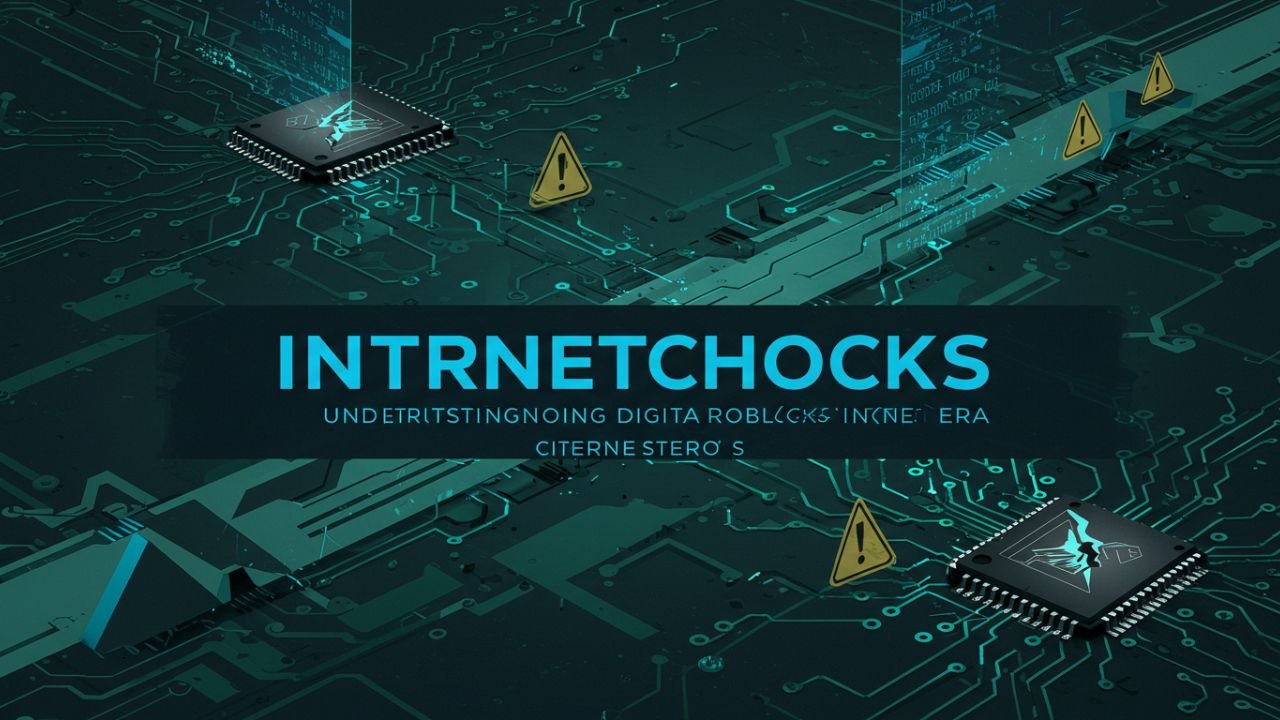Introduction: The Growing Concern of Internetchocks
In today’s digital-first world, uninterrupted connectivity has become a necessity for education, work, entertainment, and business. However, many people face hidden challenges online that affect speed, security, and accessibility. These challenges are known as internetchocks.
The term internetchocks refers to the disruptions, restrictions, and bottlenecks that slow down or limit how people interact with the internet. From weak infrastructure to cybersecurity issues, internetchocks can impact anyowhether an individual user, a student studying remotely, or a global business operating online.
This article takes a deep dive into internetchocks, exploring their causes, consequences, and solutions in today’s fast-changing digital environment.
What Exactly Are Internetchocks?
Internetchocks are barriers within the digital ecosystem that reduce efficiency and accessibility. Unlike physical roadblocks, internetchocks are invisible but equally frustrating. They can appear in different forms, such as:
-
Slow loading websites and laggy video calls.
-
Internet censorship and blocked platforms.
-
Cyberattacks, malware, or phishing scams.
-
Data restrictions or bandwidth throttling by service providers.
-
Technical breakdowns in digital infrastructure.
In short, internetchocks make digital interactions less smooth, often leaving users with wasted time and reduced productivity.
Major Causes of Internetchocks
Several factors contribute to the rise of internetchocks:
1. Weak Digital Infrastructure
Regions with outdated infrastructure struggle with slow speeds and frequent outages.
2. Network Overload
During peak hours, servers experience congestion, creating delays for end users.
3. Cybersecurity Threats
Hacking, data breaches, and viruses act as dangerous forms of internetchocks.
4. Geo-Restrictions and Censorship
Certain governments or companies block websites, creating accessibility barriers.
5. ISP Policies
Internet service providers often impose bandwidth limits or slow speeds intentionally.
The Impact of Internetchocks on Daily Life
The consequences of internetchocks extend beyond frustration:
-
Students face difficulties in attending online classes or accessing resources.
-
Remote workers experience dropped calls and disrupted workflows.
-
Businesses lose revenue when e-commerce sites load slowly or crash.
-
Gamers and streamers struggle with lag, ruining user experiences.
These barriers can even widen the digital divide, leaving some communities disconnected from global opportunities.
Internetchocks in Cybersecurity
One of the most critical forms of internetchocks is cybersecurity risks. With digital transformation on the rise, threats like ransomware and phishing are increasing. These not only slow down systems but also put sensitive information at risk.
To minimize cybersecurity-related internetchocks:
-
Use updated antivirus software.
-
Enable two-factor authentication.
-
Avoid clicking suspicious links or attachments.
-
Regularly back up important data.
By staying alert, users can reduce the disruptions caused by online threats.
Solutions to Overcome Internetchocks
While internetchocks may seem unavoidable, many solutions exist to minimize their impact:
1. Investment in Better Infrastructure
Governments and ISPs should focus on fiber-optic networks and 5G expansion.
2. Cloud-Based Systems
Cloud technology can reduce reliance on physical servers, preventing breakdowns.
3. VPNs and Proxy Tools
These tools help users bypass geo-blocks and censorship-based internetchocks.
4. Cyber Awareness Programs
Educating users about online risks can reduce security-related disruptions.
5. Optimized Business Platforms
E-commerce sites should be mobile-friendly, fast, and secure to avoid customer loss.
Internetchocks and Business Growth
For companies, internetchocks are not just inconveniences they’re potential profit killers. Studies show that users abandon websites if they take more than three seconds to load. Similarly, poor cybersecurity can damage brand trust.
Businesses can fight internetchocks by:
-
Using content delivery networks (CDNs).
-
Securing online payment systems.
-
Offering customer-friendly platforms with high uptime.
Reducing it translates directly into customer satisfaction and higher revenue.
Future Outlook: Will Internetchocks Disappear?
The future of digital connectivity looks promising, but it will continue to evolve. Emerging technologies like AI-driven cybersecurity, blockchain-based systems, and global 6G networks may reduce barriers, yet new challenges like data privacy and digital ethics will rise.
Internetchocks may never vanish completely, but proactive strategies can ensure they don’t hold back innovation and progress.
Conclusion
Internetchocks are the hidden challenges of today’s digital era. They appear in the form of slow connections, restrictions, cyber threats, and infrastructure gaps. Their impact stretches from individuals to multinational corporations, making them a universal concern.
By investing in better technology, improving cybersecurity, and adopting smarter digital habits, these barriers can be minimized. Understanding it is the first step toward creating a smoother, safer, and more inclusive internet for everyone.
